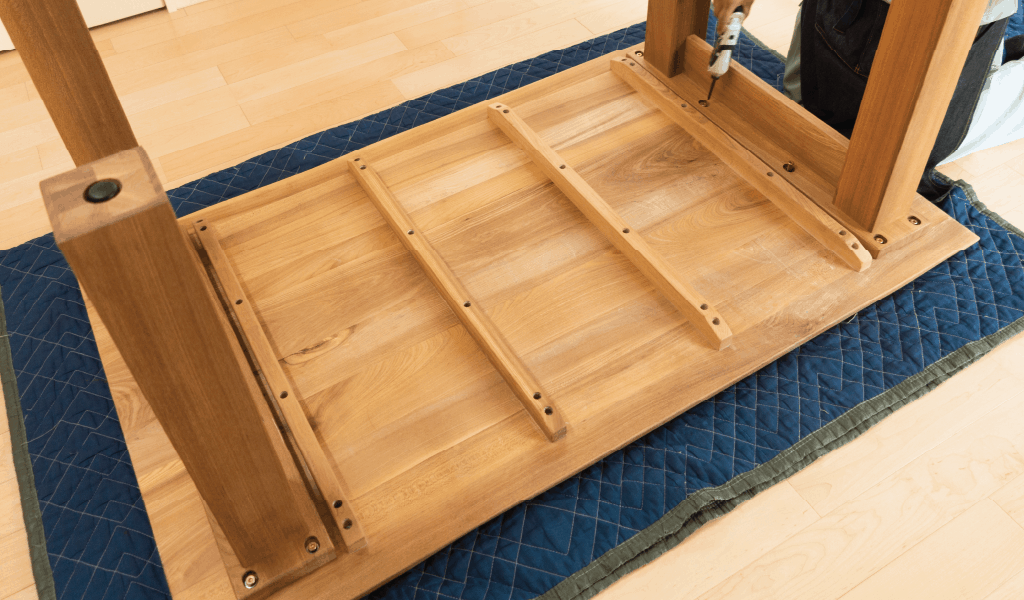How to Protect Floors and Carpets During a Move
April 13, 2020
Most people have enough to think about on moving day without worrying about property damage that could happen. That’s why floor protection is key to a successful move, whether you’re moving on your own or you’ve hired professional movers to do the work for you.
If the floors and carpet staying with the house are damaged on your watch, you will be responsible for covering the cost of repairs or replacement—money certainly not well spent, especially when this kind of damage could easily be avoided.
Professional movers handle floor and carpet protection in two ways. First, cover with care, and second, no dragging or dropping.
These two axioms of floor protection are accomplished with preparation before the move starts and while furniture and other items are moved out.
Tips for Keeping Floors and Carpets Damage-Free Throughout Your Move
WHEN PACKING:
Use Sturdy Boxes. Strong cardboard boxes can withstand the weight of whatever is packed inside. Do not overfill your boxes so they’re not too heavy for you or others to carry. When using free or used moving boxes, check their strength before packing because it will have weakened from previous use, then pack them appropriately.
Reinforce Box Bottoms. Use quality tape to reinforce the bottoms of all cardboard cartons. By making sure the contents won’t spill out when the boxes are picked up, you already will be protecting floors surfaces.
WHEN PREPARING THE HOUSE FOR THE MOVE:
Place Doormats. Doormats are designed to prevent dust, mud, water, snow and other debris from tracking onto floors and carpet inside your home. A great mover’s tip is to place a doormat both in front of and behind any door that will be used for moving.
Invest in Floor Runners. These neoprene protective coverings have an anti-slip surface on one side to keep them from shifting when in use. A floor runner can be rolled over floors or carpet as protection and also can act as a safety measure for movers on stairs.
Cover With Plastic. Plastic coverings and self-adhesive carpet masks serve as a good protection from dirty shoes, are easy to install and often have a non-slip surface that will lower the chance of slipping. They can be pricey as well.
Use Old Rugs As Protection. If floor runners or carpet films are not within budget , consider using old rugs or old blankets as temporary floor protection on the day of the move. A rug placed at strategic points along exit paths keeps dirt and moisture away from flooring surfaces and provides a layer of cushioning as a barrier against dents and scratches.
Cardboard Protects Too. Flattened cardboard boxes will protect hardwood, tiled, laminated or carpeted floors and will not scratch hardwood floors. Arrange sheets of thick cardboard directly on the surface as extra protection.
Plywood, Serious Protection. If you’re moving a piano, heavy furniture or large appliances, create a temporary floor over the existing surface by using plywood sheets. They will provide the ultimate in floor protection. Purchasing plywood could add a high cost to your moving budget. However, if floor protection is important, it’s worth the extra money.
WHEN MOVING OUT:
Use Shoe Covers. Like doormats, shoe booties worn over shoes prevent dirt and debris from tracking onto floors and carpet inside your house. If you are hiring movers, be sure to have these on-site if you wish to have them utilize them.
Remove Carpets. Roll up expensive carpets and remove them as soon as possible during the move. It’s the best way to protect them.
No dragging. Dragging furniture along the floor can cause dents, scratches, broken tiles, snags, and damage to floors and carpet. Carry lighter furniture pieces like chairs and boxes out.
Wrap with Furniture Blankets. The extra padding of a furniture blanket protects the edges of furniture pieces, kitchen appliances or other heavy items you may need to move and will lessen the impact of an accidental drop.
Use Furniture Sliders. High-quality sliders are made of strong plastic and hard rubber. They minimize or eliminate the friction between the object and the floor. Place a slider under each furniture leg and push the object gently toward its destination.
Invest in a Rubber-Wheel Dolly. Professional movers will arrive with the right moving equipment for the job, but if you’ve enlisted a group of friends to help with a self-move, you’re going to need a dolly with rubber wheels to move out the heavy items without causing any damage to the flooring. You can rent a dolly from must truck rental locations or purchase one from a home depot store. Before using it, make sure the dolly wheels are clean.
Looking to leave your move to trusted professionals? We can help. Contact us today to learn about what sets Simple Moving Labor apart as a team member in a move. We’re excited to help!












We Aim For 5 Star Service